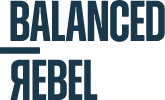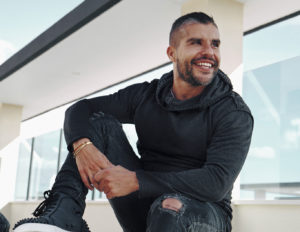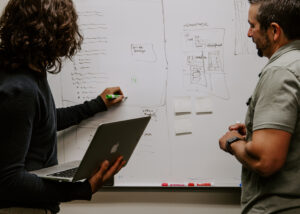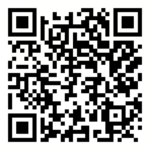Burnout is no longer a distant risk reserved for high-powered executives or front-line healthcare workers—it’s an epidemic sweeping through all levels of today’s workforce. Despite our best intentions, even mission-driven teams in the corporate world are finding themselves caught in a cycle of chronic fatigue, persistent stress, and mounting error rates. Traditional approaches to workplace health, focused on productivity and efficiency at all costs, are failing us. The question remains: what separates organizations that merely survive from those that thrive? The answer increasingly lies in a renewed commitment to restorative practices, longevity coaching, and sustainable, people-first leadership.
The Hidden Cost of Fatigue and Loss of Focus
Every organization talks about “peak performance,” but too few recognize that the foundation is not endless hustle, but smart, intentional recovery. Persistent fatigue leads to a predictable chain reaction: minor lapses spiral into costly errors, and stretched-thin employees are vulnerable to loss of focus and even critical mistakes. In today’s fast-paced corporate health landscape, the hidden costs of fatigue show up everywhere—from missed deadlines and safety incidents, to poor client service and a toxic workplace culture.
Even more concerning is how chronic stress and burnout saps creativity, innovation, and adaptability—the exact qualities organizations need to remain competitive. Studies show that teams suffering from burnout are less likely to share ideas, take healthy risks, or support each other collaboratively. Fatigue doesn’t just sabotage performance in the moment; it erodes trust and momentum over time.
Longevity Coaching: Sustainable Success for the Long Run
Enter the new era of longevity coaching. While once the realm of elite athletes or high-net-worth individuals, longevity coaches are now partnering with companies who see health as a foundation for business sustainability. These coaches do more than prescribe gym routines or step-count targets; they empower teams to embed restorative practices, mindful routines, and holistic self-care into the workday.
Longevity coaching isn’t about quick fixes or surface-level wellness perks. Instead, it’s about a paradigm shift toward treating energy as a critical resource, one that must be invested wisely and replenished with intention. This includes teaching employees:
- How to build micro-breaks into meetings for genuine rest.
- The value of sleep and circadian alignment for mental clarity.
- Strategies to avoid multitasking traps that accelerate error and loss of focus.
- The role of emotional intelligence and relationship-building in sustaining motivation.
Most critically, longevity coaching helps organizations see the human side of high performance: rest isn’t the enemy of productivity, it’s the foundation.
The Power of Restorative Practices: Moving Beyond Burnout
So, what does this look like in practice? Corporations embracing sustainability for their people are going beyond check-the-box wellness programs. Some are implementing ‘no meeting’ windows to protect deep work and recovery. Others provide on-demand mindfulness resources, sleep pods, or flexible days off. But the real game changer is cultural—the willingness to prioritize sustainability in workload, expectations, and communication.
Peak performance isn’t about sprinting daily with no end in sight. It’s a marathon, and marathoners know the importance of pacing, strategic recovery, and fueling up along the way. In companies where leaders role-model restorative behaviors and support employees to do the same, you see fewer sick days, sharper focus, and a creative, engaged community.
Corporate Health, Sustainability, and the App Revolution
With the rise of smart technology, the most progressive organizations are leveraging digital solutions to sustain change at scale. Corporate health apps, like the new Balanced Rebel platform, make it possible for employees to access expert advice, micro-learning modules, and daily reminders—empowering sustainable behavior change right from their phones.
What sets these modern solutions apart is the focus on both macro and micro elements of wellbeing:
- Guided recovery routines to reduce fatigue and fight burnout.
- Bite-sized educational content on avoiding error and maintaining focus.
- Longevity coaching modules to help users set, track, and sustain peak performance habits.
- Community-based challenges and peer support for motivation and accountability.
Crucially, these digital tools make wellbeing accessible, customizable, and cost-effective—bridging the gap for organizations that can’t afford on-site coaches or large wellness budgets.
Toward a Culture of Sustainability
Peak performance and profit do not have to conflict with employee health and sustainability—they reinforce one another. Organizations that invest in restorative culture and support with science-based solutions find they not only retain talent but also become magnets for creative, resilient, and forward-thinking teams.
If there’s one lesson for 2025, it’s that the companies “resting” on outdated models will lose ground to those championing innovation in corporate health and longevity. Burnout, fatigue, and error are not badges of honor, but warning lights—and it is within every leader’s power to address them.
Ready to transform your workplace? Start with Honest Reflection
How does your organization address employee fatigue and loss of focus?
Are you supporting true sustainability—or merely treating symptoms?
What’s one restorative practice you can introduce to your team this week?
For those eager to go further, the Balanced Rebel app offers a curated path to implementing sustainable, science-backed change—empowering individuals and organizations alike to achieve peak performance that lasts.
For those eager to go further, the Balanced Rebel app offers a curated path to implementing sustainable, science-backed change—empowering individuals and organizations alike to achieve peak performance that lasts.






